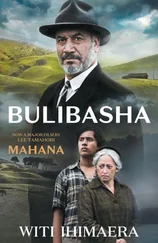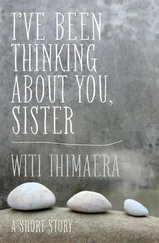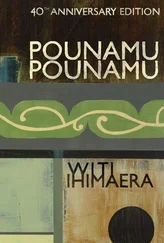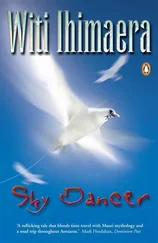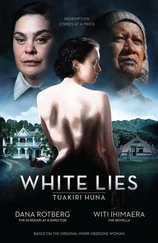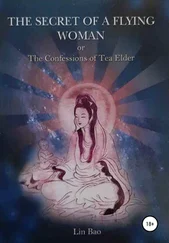D. Harold, Maori Prisoners of War in Dunedin 1869–1872: Deaths and Burials and Survivors, Hexagon, 2000, provides further information on the earlier Taranaki prisoners. See also Edward Ellison, ‘The Northern Cemetery’, Southern Heritage Trust, Historic Event, Parihaka, 2003.
Rocco is the name of Florestan’s Kerkermeister, or gaoler, in Beethoven’s Fidelio ; he has the same function in The Parihaka Woman. I have given him a surname, Sonnleithner, after Joseph von Sonnleithner, who wrote the opera’s German libretto. The original French libretto, which had been used for two previous versions of the story, Pierre Gaveaux’s Leonore, ou L’amour conjugal (1798) and Ferdinando Paer’s better-known Leonore (1804), was written by Jean-Nicolas Bouilly.
CHAPTER 21: HORITANA’S LAMENT
This is the Fidelio act. In Beethoven’s opera, set in late eighteenth-century Spain, the heroine Leonore has been searching for her husband, Florestan, whom she knows is imprisoned somewhere for his political activities. Thinking that she has found him in a fortress near Seville, she takes on the guise of a young man and obtains employment as a prison guard. Her sole objective is to rescue him. Although I did, indeed, set the libretto of Erenora in a prison, for the purposes of The Parihaka Woman I placed the action on Peketua Island.
‘Aue, e Atua’, ‘Here in this void’, and ‘In the springtime of my life’ are from Florestan’s aria, ‘Gott! Welch Dunkel hier!’, from Beethoven’s Fidelio , Act 2, Scene 1.
CHAPTER 22: MARZELLINE
The Anna Milder is named after the 19-year-old soprano who sang the role of Leonore at the premiere of Beethoven’s Fidelio , on 20 November 1805. Captain Demmer is named after Friedrich Christian Demmer, who sang Florestan in the premiere.
Marzelline’s entry into The Parihaka Woman completes the parallel with the main cast of Beethoven’s Fidelio : Leonore, Florestan, Pizarro, Rocco and now Marzelline, Rocco’s daughter, ‘seine Tochter’.
Walküre is the German for Valkyrie, the mythological warrior women who choose proud warriors, slain in battle, and take them to the hall of death.
Jack is named for Jaquino, listed as doorkeeper in Beethoven’s cast of Fidelio .
CHAPTER 23: HISTORY AND FICTION
Donald Sonnleithner is based on a dear friend and librarian whom I met during my time as Burns Fellow at the University of Otago in 1975.
CHAPTER 24: ISLAND AT THE END OF THE WORLD
The topography of the island is modelled after descriptions of the various outlying islands as detailed in ‘Offshore Islands and Conservation: New Zealand’s Subantarctic islands’, www.doc.govt.nz and other sources.
For the Pharos of Alexandria see Michael Lahanas, The Pharos of Alexandria, the first Lighthouse of the World, Hellenica, 2010, especially for its imaginative illustrations. Also useful is Jimmy Dunn, Pharos Lighthouse of Alexandria, Tour Egypt, 2010.
The Peketua lighthouse is modelled on the Dog Island and Centre Island lighthouses, built in 1865 and 1877 respectively to mark the dangerous water in Foveaux Strait between the South Island and Stewart Island. Maritime New Zealand is the source for descriptions of the lighthouse and its operation in such articles as ‘Lighthouses of New Zealand and History of Lighthouses in New Zealand’, maritimenz.govt. nz. I could not have imagined what life might have been like for Rocco, Marzelline and Erenora on a lighthouse island had it not been for Helen Beaglehole’s superb Lighting the Coast: A History of New Zealand’s Coastal Lighthouse Systems, Canterbury University Press, 2006.
CHAPTER 25: A WALK TO THE OTHER SIDE OF THE ISLAND
Le Vicomte de Bragelonne is the title of the trilogy by Alexandre Dumas, père. The third novel is L’Homme au Masque de Fer.
CHAPTER 26: ROCCO AND MARZELLINE
The New Zealand-German back-story for Rocco and Marzelline comes from research I conducted while writing my previous novel, The Trowenna Sea (2009). It is a fascinating story, worthy of a novel of its own. For further information, see Joy Stephens, ‘German Settlement in Nelson’, the prow.org.nz and ‘The Settlement of Nelson & German Immigration to Nelson’, ancestry.com.
Rocco’s wife is named after Lotte Lehmann, a famous mid-twentieth-century interpreter of the role of Leonore in Beethoven’s Fidelio .
‘Hat man nicht’, ‘Traurig schleppt’, ‘Doch wenn’s in’, ‘Macht und liebe’ and ‘Das Glück dient wie’ are strophes from Rocco’s ‘Gold Song’, in Act 1 of Fidelio .
CHAPTER 27: MARZELLINE’S DIARY
With the words ‘Mir ist so wunderbar’ Marzelline launches the quartet in Act 1 of Beethoven’s Fidelio. ‘O namenlose pein!’ are the words of Leonore in that quartet.
‘Die Hoffnung schon’ is from Marzelline’s first act aria in Beethoven’s Fidelio and ‘er liebt mich’ are her words in the Act 1 quartet.
‘Monster! How my blood boils’ and ‘Yet though like ocean breakers’ are after Leonore’s great Act 1 recitative, ‘Abscheulicher! Wo eilst du hin’, from Fidelio . ‘Komm, Hoffnung’, ‘Come, Hope’, is the aria that follows.
Rocco’s words, ‘Vielleicht ist er tot?’, are from Act 2, Scene 1 of Fidelio and ‘O armer Mann’ is after ‘den armer Mann’ in the same scene. ‘Welch unerhörter Mut’ are Pizzaro’s words in the quartet, Act 2, Scene 2.
‘Geh, Eruera, leb wohl’: this constant refrain in Erenora’s life, ‘Live well’, is used again here to give radiance to the end of the chapter, which is constructed like a long, shining aria.
CHAPTER 28: A WORLD SATURATED IN THE DIVINE
The details of Te Whiti and Tohu in the South Island come from John P. Ward’s Wanderings with the Maori Prophets, Te Whiti & Tohu (with illustrations of each chief): being reminiscences of a twelve months’ companionship with them, from their arrival in Christchurch in April 1882, until their return to Parihaka in March 1883, Bond, Finney, 1883. Ward was appointed interpreter to Te Whiti and Tohu from their arrival in Christchurch in 1882 until their return to Parihaka in March 1883.
For the Otakou Kaik, known by Maori simply as the Kaik, see W.A. Taylor, Lore and History of the South Island Maori , Bascands, 1952.
‘If the grasshoppers’ comes from p. 133 of Ward’s Wanderings with the Maori Prophets.
The extract from the famous double poi, attributed to Te Whetu and as given by the Reverend Paahi Moke and first published in Dick Scott’s The Parihaka Story , 1954, is cited in Dick Scott’s Ask That Mountain , 1975, p. 146.
For the Parihaka aftermath G.W. Rusden and Dick Scott are the main sources of the summary.
‘I shall not die’ is cited by James Belich in ‘Titokowaru, Riwha — Biography, Dictionary of New Zealand Biography’ — Te Ara Encyclopaedia of New Zealand , updated 1 September 2010.
The return of the last Parihaka prisoner is cited in many texts, including ‘Parihaka: History of Parihaka’, parihaka.com.
‘Bryce the Bravo’, The Tribune, 1890, cited in Dick Scott, Ask That Mountain , 1975, p. 160. Bryce’s ‘With the feet of 20th-century tourists’ was published in The Press , 27 March 1903 and is cited in Dick Scott, Ask That Mountain , 1975, p. 6.
Epilogue: Always the Mountain
CHAPTER 29: THE RADIANCE OF FEATHERS
Opening quote from the King James Bible, Luke 2:14.
Information on the passing of Te Whiti and Tohu is from Dick Scott, Ask That Mountain , 1975, p. 192–95; and ‘Let this be clearly understood’, Taare Waitara’s eulogy, is cited on p. 195.
Читать дальше


